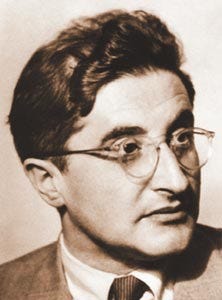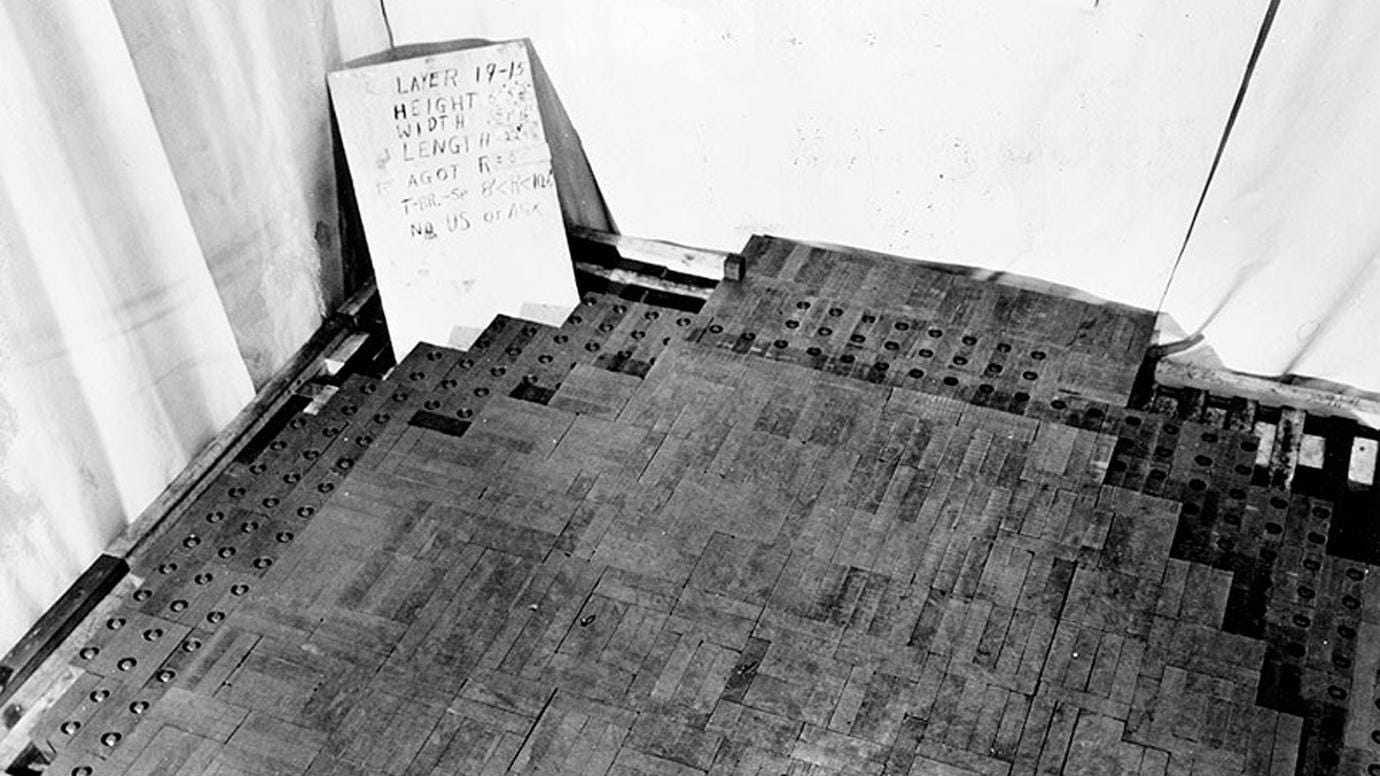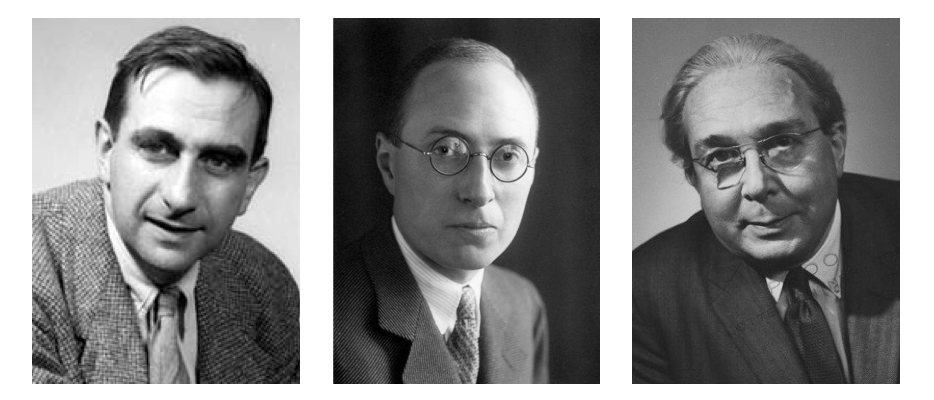After seeing Nolan's 'Oppenheimer,' do you have questions?
Everything you wanted to know about the making of the atomic bomb – with guaranteed surprises and some really scary stuff! (Part 5 of 12, or more!)
[AUTHOR’S NOTE: When we last left the dynamic but slightly dysfunctional duo of Leó Szilárd and Enrico Fermi, in the midst of spring 1939, Szilárd was choosing an annoying, entitled hands-off approach as Fermi was packing tin cans with uranium oxide for their first large-scale experiment on the best way to build a nuclear reactor. By June 1939, Szilárd had lost his vital hands-on partner, with Fermi leaving New York to attend the Summer School of Theoretical Physics at the University of Michigan, in Ann Arbor. But Szilárd wasn’t a bit discouraged by that separation. If, in September of 1939, Szilárd had been asked to write a back-to-school essay on How I Spent My Summer Vacation, he would have been able to chirp about how he’d conducted a one-man crusade to get the physics community and U.S. government to join forces in atomic energy research.]
Q: Where did Leó Szilárd spend the summer of 1939?
A: In New York City, continuing his vagabond existence, in a small, paper-strewn room at the nine-story King’s Crown Hotel, opposite the east side of the Columbia University campus. (“I would have liked to have roots,” Szilárd confessed in 1963, a year before his death, “but if I can’t have roots, I’ll settle for wings.”)
Q: What plans did Szilárd have for the summer?
A: At the beginning, he just wanted to think – which Szilárd typically did while soaking for hours in the bathtub, usually after eating two breakfasts.
Q: What did Szilárd want to think about?
A: The big experiment he had just done with Fermi (discussed above in author’s note). At first, the Hungarian-Italian duo thought it was a success. But then a heavyweight physicist visited and told them they were wrong.
Q: How did this play out?
A: The experiment involved spotting 52 cans of uranium oxide powder (borrowed from Russian refugees, totaling 500 pounds) in a circular 143-gallon pool containing water (to slow neutrons). The water was mixed with a 10 percent solution of manganese (to measure the neutrons). The bulky experiment required many long days. As Szilárd later explained, “Fermi and I teamed up in order to explore whether a uranium-water system would be capable of sustaining a chain reaction. We worked very hard at this experiment and saw that under the conditions of this experiment more neutrons are emitted by uranium than absorbed by uranium.”
Q: Why was the pool of water necessary?
A: Water was being tested as a possible “moderator.” A “moderator” was a necessary additional component for a functioning reactor. To produce the amount of fission required for a chain reaction, a “moderator” was needed to slow relatively fast-moving neutrons. Slow – or “slowed” – neutrons were necessary because they were more likely to be captured by other nuclei, increasing the probability of causing fission reactions and sustaining the chain reaction.
Q: What are the problems that can result from not having a suitable moderator?
A: They include “scattering” and “absorption.” Here’s the Dept. of Energy: “Fission is not the only potential interaction between neutrons and nuclei. Another possibility is that the free neutron will interact by ‘bouncing’ off or ‘scattering’ from the atom. In this case, the free neutron has come close enough to the nucleus to feel its presence, but no fission event will occur because the neutron did not hit the nucleus … Another possibility, however, is that the neutron will neither hit the nucleus causing it to undergo fission, nor scatter off of it, but will be ‘absorbed’ by the nucleus. In this process, the atom gobbles up the neutron without undergoing fission.”
Q: After Szilárd and Fermi thought water was an effective moderator, who changed their minds?
A: Heavyweight Czech physicist George Placzek, on a visit to Columbia. At the start of 1939, Placzek had come to Princeton University with Niels Bohr, where he inspired Bohr to discover how Uranium-235 was the key to fission (referenced in part 4 of the series). Being Jewish, and with Hitler on the verge of starting a continent-wide war, he had decided to accept a post at Cornell rather than return to Europe. (Placzek is pictured below):
Q: What was Placzek’s criticism of the experiment?
A: As Rhodes noted, “It was already clear that every possible secondary neutron would have to be husbanded carefully if a chain reaction was to be initiated in natural uranium.” This was exactly Placzek’s critique. As Szilárd later wrote, “Placzek said that our conclusion was wrong because in order to make a chain reaction go, we would have to eliminate the absorption of [neutrons by the] water; that is, we would have to reduce the amount of water in the system, and if we reduced the water in the system, we would increase the parasitic absorption of [neutrons by] uranium [because with less water fewer neutrons would be slowed]. He recommended that we abandon the water-uranium system and use helium for slowing down the neutrons. To Fermi this sounded funny, and Fermi referred to helium thereafter invariably as Placzek’s helium.”
Q: After Placzek suggested water wasn’t going to work, were Szilárd and Fermi ready to switch to helium, as Placzek suggested?
A: No. “I took Placzek more seriously [than Fermi],” said Szilárd, “and while I had, for purely practical reasons, no enthusiasm for helium, I dropped then and there my pursuit of the water-uranium system.”
Q: After the experiment’s results were challenged, why didn’t Fermi stay in New York and join Szilárd in making a new plan?
A: Here’s speculation from Rhodes: “Either Fermi did not share Szilárd’s sense of the urgency of chain-reaction research or he was withdrawing for a time from the Navy’s indifference (referenced in part 3 of this series) and Placzek’s persuasive criticism of his uranium-water system; probably both.”
Q: Where are we now on our timeline?
A: We’re now at the end of June 1939, with Fermi in Michigan studying cosmic rays and Szilárd waiting for inspiration to strike while soaking in a bathtub.
Q: Did Szilárd have a eureka moment?
A: Yes. As an alternative to water, Rhodes explained, “Szilárd thought … the next common material up the periodic table that might work … that would be thermally and chemically stable … was carbon … The mineral form of carbon, chemically identical to diamond but the product of a different structure of crystallization, is graphite, a black, greasy, opaque, lustrous material that is the essential component of pencil lead.”
Q: Did Szilárd convey his eureka moment to Fermi?
A: Yes. Immediately. On July 3, 1939, he sent an air-mail letter to Ann Arbor. “It seems to me now,” Szilárd wrote to his Italian colleague, “that there is a good chance that carbon might be an excellent element to use in place of hydrogen, and there is a strong temptation to gamble on this chance … I personally would be in favor of trying a large-scale experiment with a carbon-uranium-oxide mixture if we can get hold of the material.” Szilárd wrote another letter to Fermi on July 5, 1939, the same day he visited the National Carbon Company, on East 42nd Street, to inquire about purchasing 16-inch graphite blocks. Letters to Fermi followed on July 8 and July 11.
Q: Is it fair to say Szilárd was hounding Fermi?
A: Yes. But Fermi dutifully responded. The result: the two of them – by mail, in about two weeks – would co-design the world’s first nuclear reactor. Importantly, Fermi yielded to Szilárd in what would be a pivotal choice: to place spheres of uranium in a lattice array.
Q: A lattice array? Can you explain in more detail?
A: A lattice is an interlaced structure. Here’s some sort-of-related examples. Think of how the checkerboard frame of a garden trellis is used to support climbing plants, or how the crisscrossed steel in transmission towers provides stability while minimizing cost. We can also describe Szilárd’s design like this: He was proposing to embed the uranium in a three-dimensional grid of graphite in a bespoke assembly. (Image below, from 1942, shows the finished design):
Q: Sounds like this was going to be expensive. Was it?
A: Yes. Very. For the initial “super experimental” phase of construction, Szilárd expected he and Fermi would need about 50 tons of carbon and five tons of uranium, which would cost about $35,000 ($800,000 in today’s dollars).
Q: Where did Szilard hope to get the money?
A: One option was Lewis Strauss, a hugely successful Wall Street banker, who, in 1939, couldn’t possibly have envisioned being cast as the chief villain in a hugely successful 2023 film about the atomic bomb. In Nolan’s Oppenheimer, Robert Downey Jr. plays Strauss, who, in 1954, would surreptitiously destroy Robert Oppenheimer’s reputation. Meanwhile, in 1939, Leo Szilárd was asking him to privately finance atomic research in America.
Q: How did Strauss respond?
A: He didn’t write a check. But to be fair to Strauss, he had already written one to Szilárd, who, as you might gather, was an incessant intellectual bumblebee. And it was a very big check. The year before, Strauss had supplied Szilárd with $20,000 (about a half-million in today’s dollars) to fund what was still an inconclusive physics research project on a better radiation treatment for cancer patients. At the time, both of Strauss’s parents had recently died of cancer, his mother in 1935, his father in 1937.
Q: Did Szilárd ask others for funding?
Q: Yes. But he got nowhere. There had been no response after an inquiry to the Army’s chief weapons-development facility, the Aberdeen Proving Ground in Maryland. Szilárd did get a reply from the Navy’s Ross Gunn, who had attended the March 1939 meeting where Fermi explained the revolutionary news about fission to what seemed like a less-than-enthusiastic audience of military figures (noted in part 3 of this series).
Q: But Gunn was paying attention, wasn’t he?
A: In kneejerk fashion, Gunn wondered if Fermi, being from Italy, was a Fascist, like Mussolini, but he was intrigued by fission and, instead of following up with Fermi, got himself government funding to research nuclear submarines. Predictably, Gunn was no help to Szilard, given what appeared to be an innate suspicion of foreigners. “It seems almost impossible to carry through any sort of an agreement [with the Navy] that would be really helpful to you” Gunn wrote to Szilárd. “I regret this situation but see no escape.”
Q: What about assistance from Columbia’s Physics Chairman, George Pegram?
A: Here’s Rhodes: “[Szilárd] sought out Pegram in those early July days and tried to convince him of the urgent need for a large-scale experiment to settle the question. The dean resisted the assault.” As Szilárd later explained, “[Pegram] took the position that even though the matter appeared to be rather urgent, this being summer and Fermi being away there was really nothing that usefully could be done until the fall.”
Q: Was Szilard running out of people to ask?
A: Yes. “Despite his Olympian ego not even Leo Szilárd felt capable of saving the world entirely alone,” Rhodes wrote. “He called on his Hungarian compatriots now for moral support. Edward Teller had moved to Manhattan for the summer to teach physics at Columbia; Eugene Wigner came up from Princeton to conspire with them.” (Below, from left to right: Teller, Wigner and Szilárd):
Q: What did the Hungarian conspiracy decide to do next?
A: They linked the need for lots more uranium to, as William Lanouette wrote, “recent news from Europe that German military expansion could easily overrun Belgium, whose colony in the Congo was then the world’s principal uranium source.” The Hungarians wondered if there was a way to warn the Belgians, so they could somehow prevent the Nazis from obtaining the uranium. Szilárd recalled that his old friend Albert Einstein knew the Queen of Belgium. The celebrated scientist had met her royal highness in 1929 and they’d become regular correspondents. Einstein, with a reputation for being sweetly unpretentious, called her “Queen” and the royal couple “the Kings.” The Hungarians knew Einstein was summering in a cottage on the tip of Long Island, about a two-hour drive from Manhattan, heading due east. Contacted by phone, Einstein gladly agreed to a visit.
Q: When did it happen?
A: Wednesday, July 12, 1939. Szilárd didn’t own a car, nor did he drive. Eugene Wigner, who had a 1936 Dodge coupe, was enlisted to be chauffeur and he picked up Szilárd at the King’s Crown Hotel. As Lanouette reported, “The two Hungarians confused the Indian names in their directions and drove to Patchogue, on Long Island’s south shore, instead of to Cutchogue, on the north.” Ultimately, the two world-class physicists would find Einstein after getting directions “from a sunburned boy of about seven.”
[NOTE TO READER: In Part 6, the story of the first of several occasions when Albert Einstein becomes Leo Szilárd’s secret weapon.]








